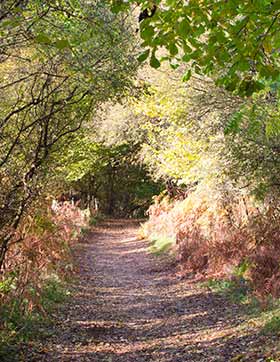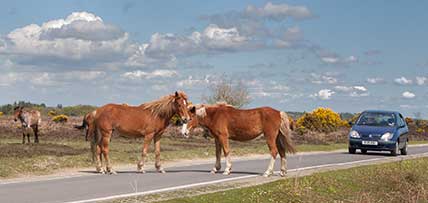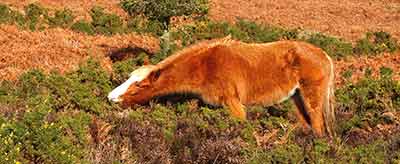Brockenhurst walks

Check out these great Brockenhurst walks. All can be started from Brockenhurst village centre and they are therefore convenient for travellers by train to Brockenhurst station and also for users of local bus services including, in season, New Forest Tour buses.
All these Brockenhurst walks, though, also pass close to Forestry Commission or other car parks situated on, or near, the main walk routes, which provide convenient alternative start points.
The Brockenhurst walks are of varying length, ranging from 4.5 kilometres (2¾ miles) to 10 kilometres (6¼ miles), excluding the distance from the village centre to the main start points. There are no really steep gradients, and few stiles to climb over.
And for the really energetic, the first walk shown can be extended to incorporate much of a separate Boldre Walk, providing a total route length of 14 kilometres (8¾ miles).
Please note: Charges apply for use of the car park in Brockenhurst village centre. Free parking is, however, available in Forestry Commission car parks and in a small car park beside the river, opposite the Balmer Lawn Hotel - adjacent to the A337 to the north of the village.
The walks
 Pub along the way
Pub along the wayMore links
Search this site
Sika deer continue to engage in rutting behaviour, and will do so until December.
Pigs seek out the remains of the acorn crop.
Beech leaves are transformed into a magnificent mosaic of glorious reds and golds. Other deciduous trees, too, take on an autumnal cloak before their leaves fall.
Dragonflies can occasionally be seen on the wing on bright days early in the month.
December
Foxglove leaves survive the winter at ground level, and offer the prospect of colourful summer blooms to come.
Redwings and fieldfares, autumn and winter visitors, gorge on haws and holly berries.
Great grey shrikes and hen harriers hunt over the heaths and other open spaces.
Honeysuckle by the end of the month often shows welcome signs of new growth.

Sadly, 58 animals were killed - 35 ponies, 13 cows, 8 donkeys and 2 sheep, whilst a further 32 were injured - 3 pigs, 9 donkeys, 11 cows and 9 ponies.
(Forty-three accidents occurred in daylight, 15 at twilight and 101 in the dark. Twenty-seven accidents were not reported by the driver involved).
Here's just one horrific example - Three donkeys killed in collision with van at notorious New Forest blackspot (Advertiser and Times)

